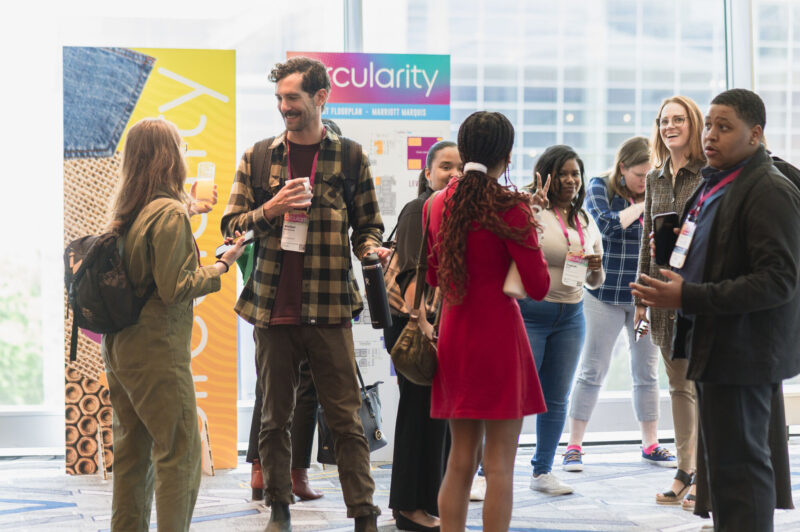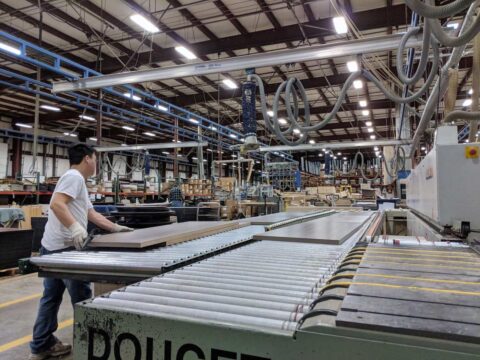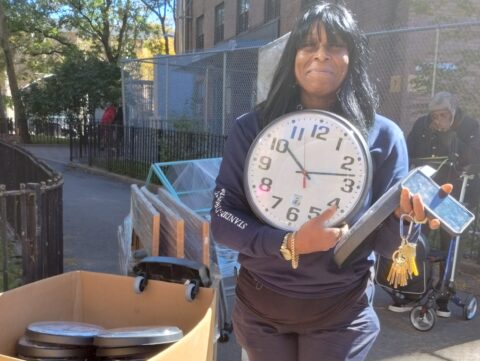The Circular Workplace, in real life with an audience
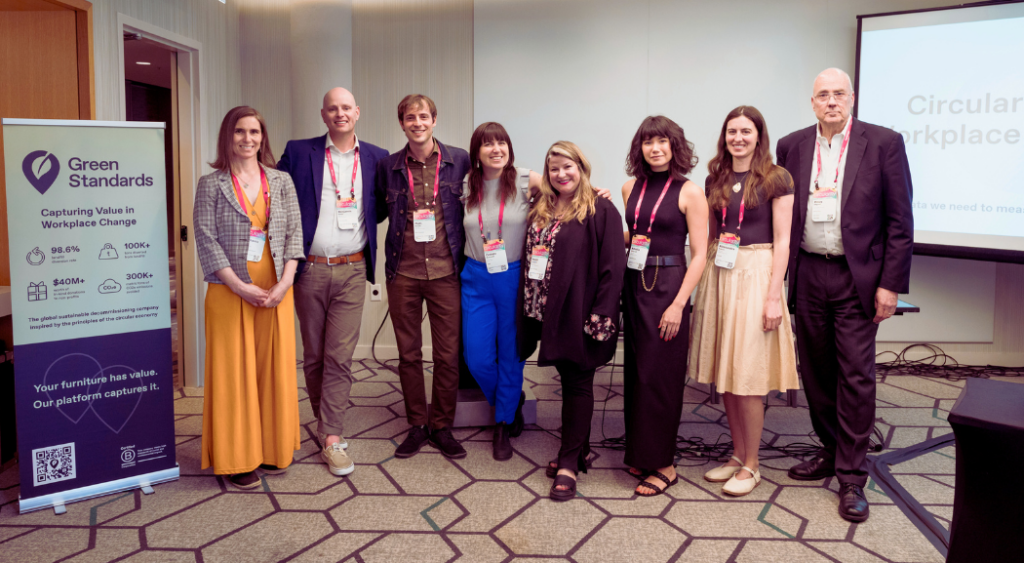
Here’s a provocative question that came out of our Circular Workplace event at the Circularity conference last week in Chicago: Is carbon the best measure of circularity? While the circular economy done right can dramatically reduce carbon emissions, there’s much more to the story. Or as Alessandra Pistoia, circular economy and zero waste lead at Microsoft, put it in her fireside chat with Heidi Frasure, head of sustainability at Green Standards:
“If and when the globe decarbonizes, will we have solved all of our environmental problems? The answer is no. Carbon is just one of many metrics to look at.”
Pistoia’s unpacking of Microsoft’s zero-waste efforts included the fact that the computing giant’s campus in Redmond, Washington, has been TRUE Certified by the US Green Building Council for six years running — which is why we invited Celeste McMickle of the USGBC to follow the fireside chat with a deep dive into the zero-waste certification program.
And because clear communication is central to high-functioning workplaces of all shapes, we enforced a strict no-acronyms rule in our event: TRUE stands for Total Resource Use and Efficiency; FFE is furniture, fixtures, and equipment; and ITAD means information technology asset disposal. We rounded things off with a panel discussion on The Reconomy of Workplace, with Katie Chapman of furniture manufacturer Haworth, Doug Pilgrim of furniture remanufacturer Davies Office, Stephanie McLarty of electronics recycler Quantum Lifecycle LP, and Amelia Sklaroff of Green Standards, the global sustainable decommissioning company. We traced the value chain of what’s in the workplace through this group, emphasizing the overlaps and specifically where we could learn from one another.
Our takeaway: The workplace is a big place, and connecting all the key players is the necessary first step toward circularity. The furniture industry can learn from the world of information technology, and zero-waste certifiers can widen their scope to include all aspects of office circularity. The Circular Workplace coalition is all about collaboration across industries, so don’t hesitate to hit us up at hello@circularworkplace.com to get involved!

A new playbook for planning and procurement
Dianne Murata describes herself as a furniture nerd and accidental environmentalist, which nicely summarizes the energy and expertise contained in the Kimiko Green Playbooks her firm publishes. To mark the launch of Volume 2.0 this week, we asked her a few questions.
Circularity can be overwhelming, so it’s refreshing to see that your mantra is “Just One Thing.” What’s the JOT you’d like a reader coming in cold to know about this Playbook?
When we first started looking into the scale and scope of diverting commercial furniture from the landfill, we regularly had what we call “brown paper bag moments.” You know, the times when it feels so overwhelming, you want to hyperventilate and need to breathe into a brown paper bag to calm down? There have been a lot of those moments.
So, the first thing we would want your readers to know is: you are not alone! Beyond that, just know there is no wrong way as long as they get started! Taking that first step, no matter how small can make a significant impact. This playbook provides practical, actionable strategies to help you begin your journey towards sustainable practices. By focusing on just one step at a time, you’ll find it easier to incorporate circularity into your processes and gradually build a more sustainable approach.
Can a reader jump into 2.0 without 1.0, or would that be like watching The Empire Strikes Back before A New Hope?
Absolutely! Each playbook is focused on a different story and in fact each chapter can be read/used independently too. Playbook 1.0 begins at the end (of the furniture lifecycle). It focuses on five strategies to sustainable decommission furniture. For Playbook 2.0, we circled back to the beginning and discuss sustainable practices in furniture specifications and procurement. While they complement each other, the playbooks stand on their own and provide valuable insights independently (without the use of Jedi mind tricks).
A mile-high forum on better ways to work
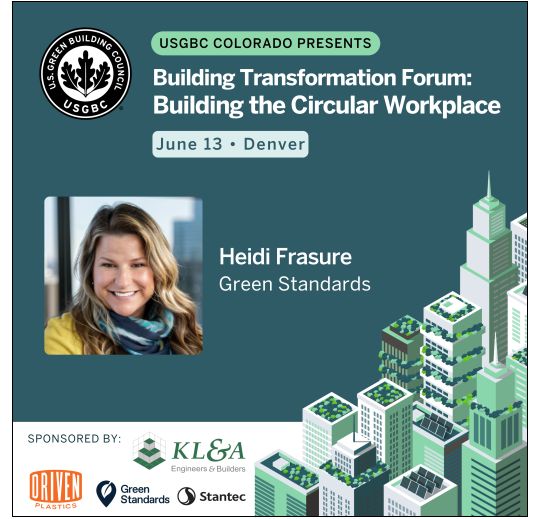
The idea in circularity is to unlock the full value of materials rather than wasting them. To do this, we need innovative business solutions coupled with progressive policy that allows new economic models — concepts like designing for circularity, establishing real product take-back business models that work, supporting refurbishment and remanufacturing, and innovating reverse logistics. On June 13th in Denver, Heidi Frasure of Green Standards will join representatives from the US Green Building Council, Stantec, Stok, Novalis, and the City of Boulder to discuss how these ideas can be put into action.
We’re always looking for case studies, actionable tips, and news items about the circular workplace. Reach out at hello@circularworkplace.com to join our coalition.
Signup for the Roundup
Subscribe to our newsletter and we’ll send you circular workplace updates every month
